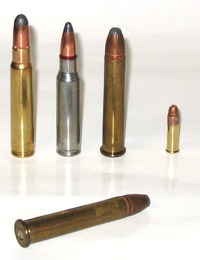This is an old revision of this page, as edited by Wingedhussar1503 (talk | contribs) at 22:52, 24 February 2023. The present address (URL) is a permanent link to this revision, which may differ significantly from the current revision.
Revision as of 22:52, 24 February 2023 by Wingedhussar1503 (talk | contribs)(diff) ← Previous revision | Latest revision (diff) | Newer revision → (diff)| This article includes a list of references, related reading, or external links, but its sources remain unclear because it lacks inline citations. Please help improve this article by introducing more precise citations. (January 2013) (Learn how and when to remove this message) |
| The topic of this article may not meet Misplaced Pages's general notability guideline. Please help to demonstrate the notability of the topic by citing reliable secondary sources that are independent of the topic and provide significant coverage of it beyond a mere trivial mention. If notability cannot be shown, the article is likely to be merged, redirected, or deleted. Find sources: ".375 Winchester" – news · newspapers · books · scholar · JSTOR (February 2023) (Learn how and when to remove this message) |
| .375 Winchester | ||||||||||||||||||||
|---|---|---|---|---|---|---|---|---|---|---|---|---|---|---|---|---|---|---|---|---|
 Photo of two .375 Winchester rifle cartridges with others for comparison. Left to right: 8mm Mauser, .308 Winchester, .375 Winchester, .22 Long Rifle. Foreground: .375 Winchester. Photo of two .375 Winchester rifle cartridges with others for comparison. Left to right: 8mm Mauser, .308 Winchester, .375 Winchester, .22 Long Rifle. Foreground: .375 Winchester. | ||||||||||||||||||||
| Type | Rifle | |||||||||||||||||||
| Place of origin | USA | |||||||||||||||||||
| Production history | ||||||||||||||||||||
| Designed | 1978 | |||||||||||||||||||
| Manufacturer | Winchester | |||||||||||||||||||
| Produced | 1978–present | |||||||||||||||||||
| Specifications | ||||||||||||||||||||
| Parent case | .38-55 Winchester | |||||||||||||||||||
| Case type | Rimmed, straight | |||||||||||||||||||
| Bullet diameter | .375 in (9.5 mm) | |||||||||||||||||||
| Neck diameter | .400 in (10.2 mm) | |||||||||||||||||||
| Base diameter | .420 in (10.7 mm) | |||||||||||||||||||
| Rim diameter | .506 in (12.9 mm) | |||||||||||||||||||
| Rim thickness | .063 in (1.6 mm) | |||||||||||||||||||
| Case length | 2.020 in (51.3 mm) | |||||||||||||||||||
| Overall length | 2.560 in (65.0 mm) | |||||||||||||||||||
| Maximum pressure (CIP) | 55,000 psi (380 MPa) | |||||||||||||||||||
| Maximum CUP | 52,000 CUP | |||||||||||||||||||
| Ballistic performance | ||||||||||||||||||||
| ||||||||||||||||||||
| Source(s): Hodgdon Online Reloading Data | ||||||||||||||||||||
The .375 Winchester is a modernized version of the .38-55 Winchester, a black powder cartridge from 1884. It was introduced in 1978 along with the Winchester Model 94 “Big Bore” lever action rifle.
Though very similar in appearance to the .38-55 Winchester parent cartridge, the .375 Winchester cartridge has a shorter case length and operates at a higher chamber pressure of 52,000 CUP or 55,000 psi (380 MPa), compared to the .38-55 Winchester cartridge which has a longer case length and operates at a lower chamber pressure of 30,000 CUP or 35,000 psi (240 MPa).
The most commonly used bullet weights for the .375 Winchester are between 180 gr to 260 gr (11.7 g to 16.9 g) and has been used on a variety of medium to large game species such as whitetail, pronghorn, caribou, elk, moose, black bear, and brown bear.
See also
References
External links
| Cartridges derived from the .38-55 Winchester or its derivatives (including wildcats) | |||||||
|---|---|---|---|---|---|---|---|
| First generation derivatives |  | ||||||
| Second generation derivatives (based on .30-30) | |||||||
| Third generation derivatives |
| ||||||
| Fourth generation derivatives (based on .219 Donaldson Wasp) | |||||||
This ammunition-related article is a stub. You can help Misplaced Pages by expanding it. |